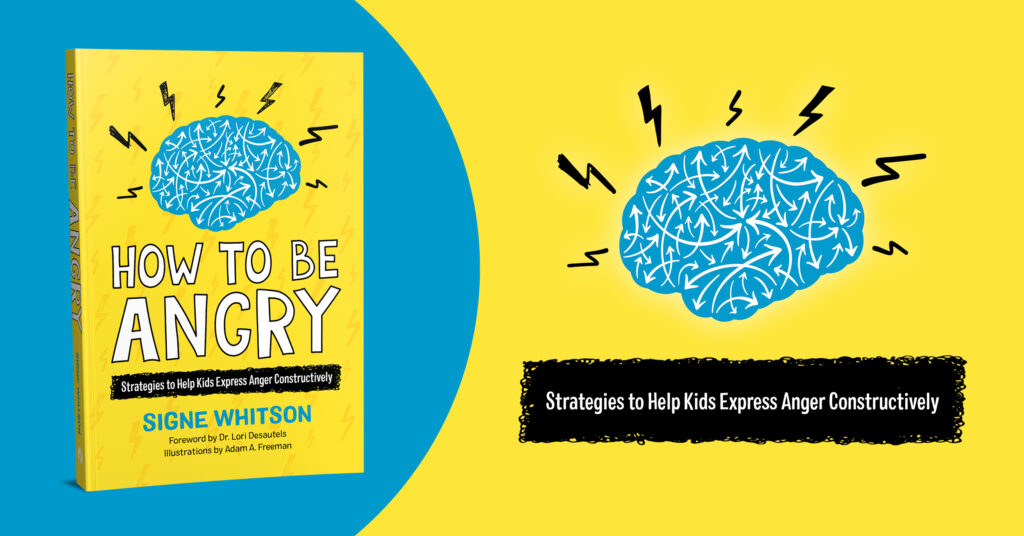How to Be Angry publishes on March 21, 2022.

Can you briefly outline your history? How has this background influenced what you write about?
For the last 24 years, I have been working with children, adolescents, and families in a variety of settings including residential treatment, private practice, and public, private, and charter schools. I am also the Chief Operating Officer of the Life Space Crisis Intervention (LSCI) Institute. LSCI is a training organization that teaches adults how to meet the needs of young people who exhibit challenging behaviors. In each of these roles, my commitment to looking beyond a youth’s surface behavior and seeking to understand the feelings and thoughts that drive their actions has deepened. How to Be Angry is all about honoring a young person’s natural—even predictable—feelings of anger. It teaches them how to express it in constructive, relationship-affirming ways that allow them to get their needs met without violating the rights of others.
What do you hope people take away from How to Be Angry?
From the time we are little, many of us receive either the spoken or unspoken message that anger = bad. One of my priorities in writing How to Be Angry was to help young people (and the adults that care for them!) understand that anger is neither good nor bad, but rather a normal human emotion and a natural reaction to frustrating events. Feeling angry is not a problem. Acting anger out in aggressive, passive, or passive-aggressive ways can damage relationships and worsen problem situations.
I hope that after reading and experiencing the activities in How to Be Angry, young people take away a solid set of assertive communication skills that they can apply both in their peer friendships and in their relationships with adults. In learning to make friends with their anger and express it in constructive ways from an early age, I hope to help lay a foundation for healthy communication throughout a reader’s life.
How can schools use How to Be Angry?
As a School Counselor, I’ve used the lessons in How to Be Angry with students ranging from five to teenagers. In elementary and middle school, I use the discussion prompts, activities, and games in both individual and small group sessions with students and during regularly scheduled classroom visits. It never ceases to amaze me how much kids actually want to talk about their feelings when the opportunity is given to them through engaging activities, stories, and relatable experiences.
The Anger Expression Styles activity in Session 11 is always a student favorite! Kids get such a kick out of hearing themselves say the exact same words in different tones of voices. They quickly realize how the meaning of a phrase can be transformed.
During Sessions 2-4, students love learning about what is going on in their brain when they are experiencing anger. Understanding the neurobiological roots of behavior helps normalize anger for kids. The mindfulness and sensory strategies featured in Sessions 5-6 are hands-on and experiential. Therefore, kids can immediately apply them during stressful moments. One of the most rewarding things for me is to overhear a child reassure a friend. “Try taking some slow, deep breaths or use your Mindful Breathing Beads (Session 5) to calm your brain” . With practice, kids really internalize and apply How to Be Angry strategies!
What was your initial inspiration for How to Be Angry?
Prior to writing How to Be Angry, I co-authored a book called The Angry Smile, a guide for adults on how to understand and change passive aggressive behavior. Many readers reached out to ask about resources to help kids manage their own destructive styles of anger expression. The idea for How to Be Angry was born!
How do you hope How to Be Angry will help parents?
Parents and caregivers are their child’s most important teachers of how to express angry feelings in constructive ways. For this reason, each session of How to Be Angry includes a special Notes for Parents section. This section summarizes the lesson and recommends follow-up discussion prompts, activities, questions, games, and hands-on activities that reinforce and deepen a child’s learning. The Notes offer parents and caregivers ways to apply a child’s real-life experiences to their learning. Anger is an intense emotional experience; having the opportunity to process it with parents is an enormous bonding opportunity.
Are there any other resources you would recommend?
The How to Be Assertive video series is a companion resource for adults who live and work with young people. Focused on the four main styles of anger expression (aggression, passive-aggression, passivity, and assertiveness), this 4-part video series teaches adults how to teach kids the skills they need to change destructive anger behaviors and to be assertive even in the most complicated social situations.
To further understand the neurobiology of anger in young people, I highly recommend the work of Dr. Daniel Siegel, whose hand-brain model I referenced in How to Be Angry. Siegel’s book, The Whole-Brain Child: 12 Revolutionary Strategies to Nurture Your Child’s Developing Mind. This has long been one of my resources for understanding a young person’s brain during times of stress and upset.